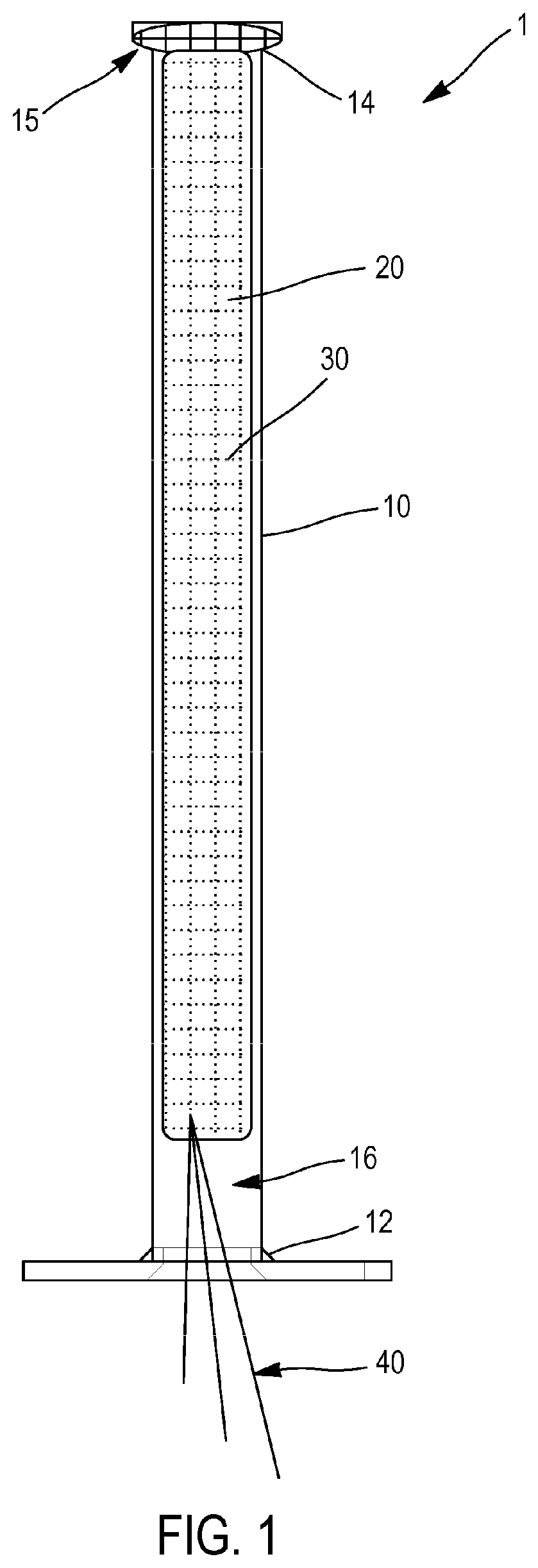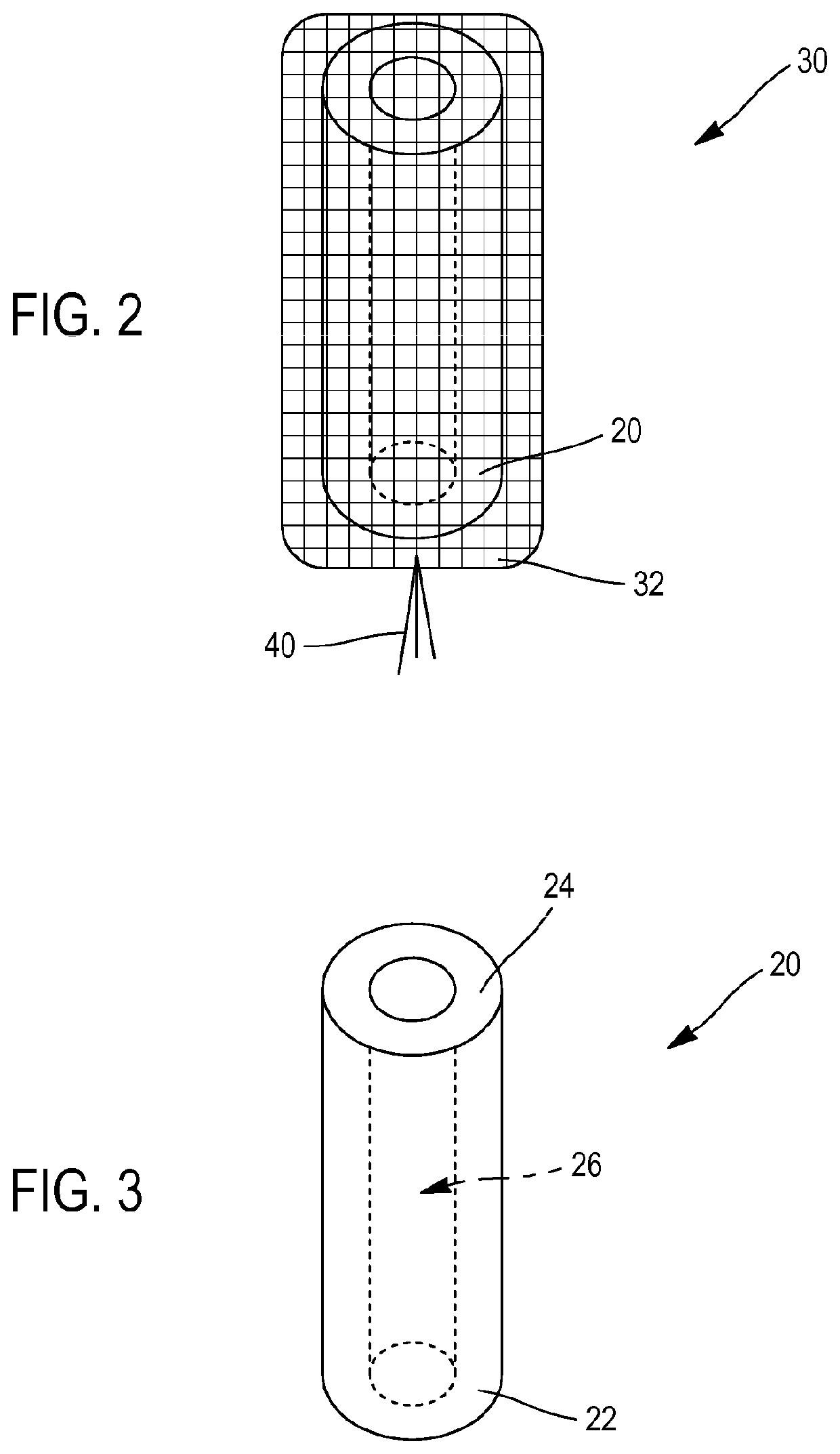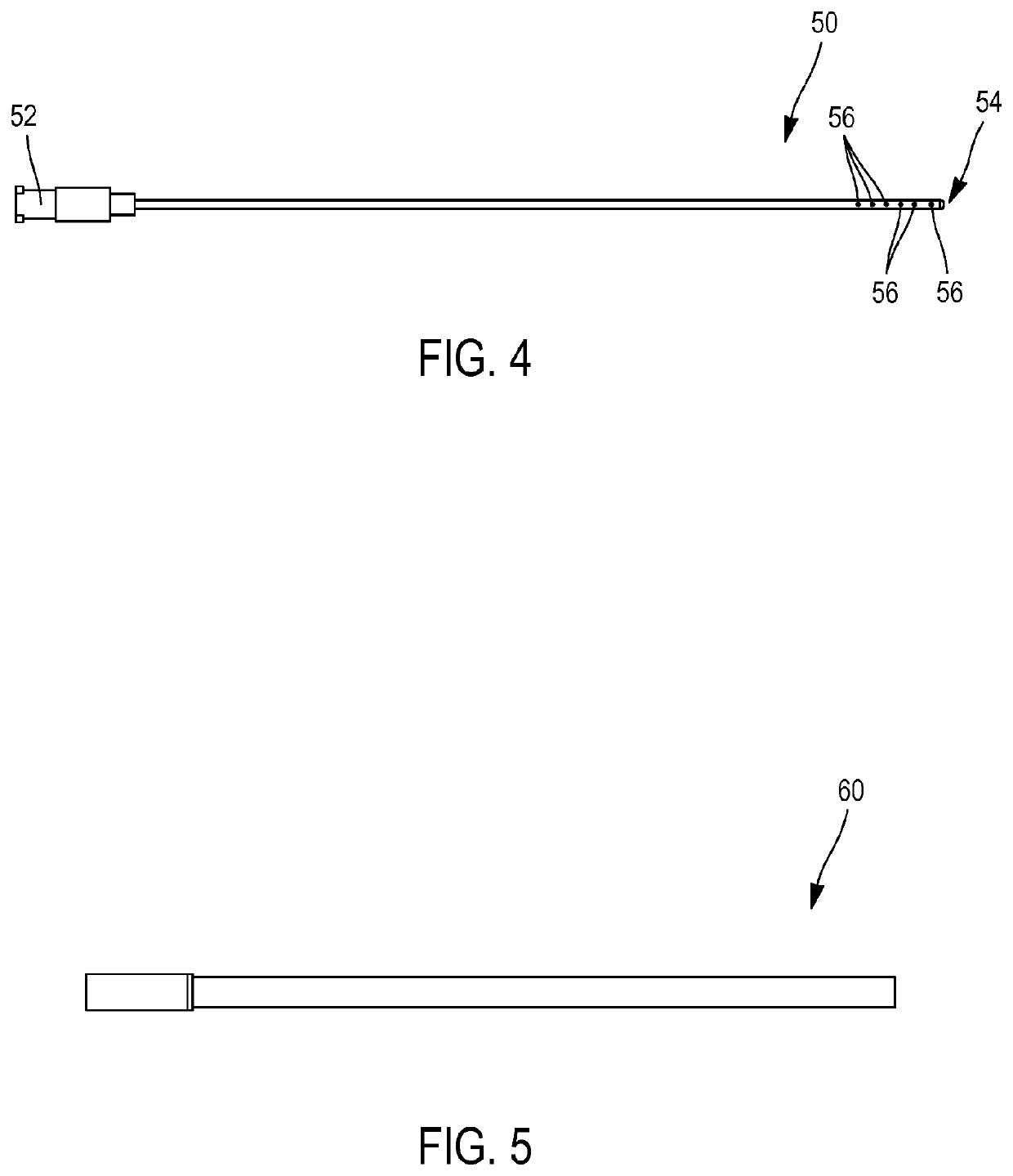System for treating an epistaxis
a technology for epistaxis and system, applied in the field of medical devices, can solve the problems of system discomfort, considerable risk of secondary hemorrhage, traumatizing wicks, etc., and achieve the effects of less trauma to the patient, and convenient us
- Summary
- Abstract
- Description
- Claims
- Application Information
AI Technical Summary
Benefits of technology
Problems solved by technology
Method used
Image
Examples
first embodiment
he Outside of the Compressible Member
[0072]In this first embodiment, illustrated with reference to FIGS. 1 to 5, the compression device comprises an implantation tube 10, configured to be introduced into the nasal cavity of the patient, said implantation tube 10 having a proximal end 12, a distal end 14 and a central through passage 16 extending between the proximal end 12 and the distal end 14. Moreover, the compressible member 20 has hemostatic properties. Finally, the system further comprises a fastener 40 configured to be attached to the envelope 30 and protrude from the proximal end 12 of the implantation tube 10 when the compressible member 20 is housed in the central passage 16, in order to facilitate the introduction of the compressible member 20 and the envelope 30 into the implantation tube 10 when the compressible member 20 is in the expanded configuration.
[0073]The compressible member 20 can in particular be made of a compressible material with shape memory such as foam,...
second embodiment
the Inside of the Compressible Member
[0134]In this second embodiment, illustrated with reference to FIGS. 6 to 8, the compression device 110 is configured to aspirate air into the compressible member 120. To this end, the compression device 110 can in particular comprise a partial vacuum member, capable for example of reaching a vacuum in the compressible member 120 on the order of 450 mbar. Moreover, the envelope 130 is configured to sealingly enclose the compressible member 120 in order to allow this partial vacuum to be generated.
[0135]The compression device 110 can in particular comprise a syringe, for example a 50 mL syringe when the compressible member 120 has a length L of 10 cm for a diameter D of 2.8 to 2.9 cm.
[0136]As a variant, the compression device 110 could comprise a partial vacuum system 1 conventionally used in hospitals.
[0137]The envelope 130, which is sealed here, must be capable of resisting the pressure difference (with respect to the nasal cavity, which is at a...
PUM
 Login to View More
Login to View More Abstract
Description
Claims
Application Information
 Login to View More
Login to View More - R&D
- Intellectual Property
- Life Sciences
- Materials
- Tech Scout
- Unparalleled Data Quality
- Higher Quality Content
- 60% Fewer Hallucinations
Browse by: Latest US Patents, China's latest patents, Technical Efficacy Thesaurus, Application Domain, Technology Topic, Popular Technical Reports.
© 2025 PatSnap. All rights reserved.Legal|Privacy policy|Modern Slavery Act Transparency Statement|Sitemap|About US| Contact US: help@patsnap.com



